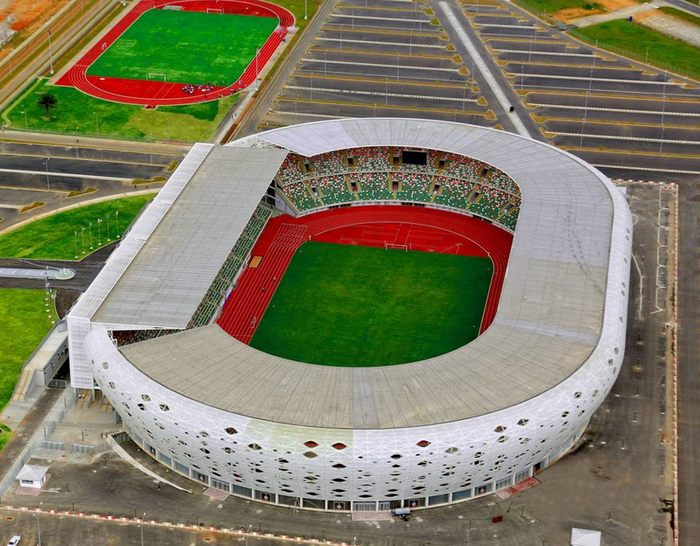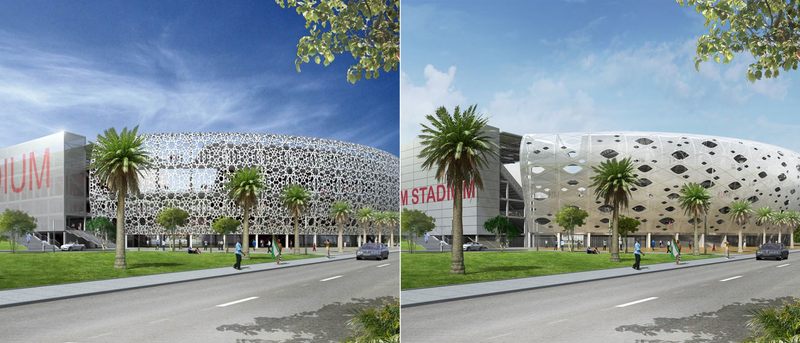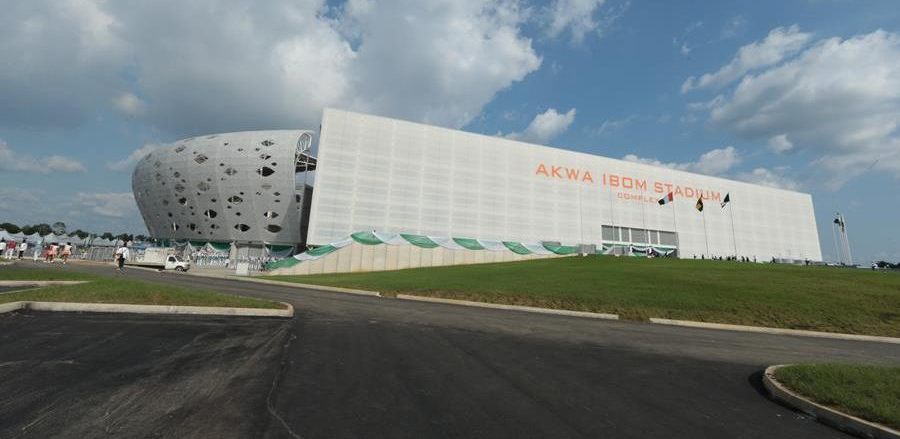New addition: Nigeria’s white gem
source: StadiumDB.com; author: michał
 With diamond-shaped apertures in its white elevation this stadium is in a league of its own in West Africa. But will Akwa Ibom Stadium be sustainable in the long run?
With diamond-shaped apertures in its white elevation this stadium is in a league of its own in West Africa. But will Akwa Ibom Stadium be sustainable in the long run?
Advertisement
While it may be hard to believe, southern city of Uyo had no stadium with seats in 2007. Sports infrastructure policy changed as governor Godswill Akpabio took over. First he ordered renovation of the existing township stadium, then commissioned plans for a new larger one, able to hold international events.
 A plot of 36 hectares was selected along south-western highway bypass of Uyo and planning began in German office of ASS Architekten. In 2009 they’ve drawn a plan of building one major grandstand with necessary sporting and hospitality infrastructure (notably with a bullet-proof VIP and VVIP lounge) and remaining sections in the shape of C.
A plot of 36 hectares was selected along south-western highway bypass of Uyo and planning began in German office of ASS Architekten. In 2009 they’ve drawn a plan of building one major grandstand with necessary sporting and hospitality infrastructure (notably with a bullet-proof VIP and VVIP lounge) and remaining sections in the shape of C.
With two tiers on the entire perimeter, the stadium holds 30,000 people on individual seats, offering complete cover from rain – very common in the coastal region of Akwa Ibom. There is room for temporary expansion by a couple thousand and foundations in place are able to support up to 60,000 capacity in the future.
Initial concept envisaged covering the entire concrete structure with profiled metal panels, creating forest-alike impression. In 2010 the idea changed to a more simple and uniform one. The stands were to be covered by highly perforated lightweight frame, loosely connected to local art patterns. But that vision was also changed.

Eventually the entire stadium was covered with almost opaque white acrylic glass. Divided into hundreds of triangular panels, the material gives an elegant effect with diamond-shaped expanses. These apertures add dynamism to the structure and also assure proper ventilation of the concourses. Interestingly, all of the façade materials were imported from Austria, requiring three months to deliver.

Inside the stadium isn’t as neutral in colouring. Seats create a mosaic of three colours: orange, white and green. These represent both Nigeria and Akwa Ibom. At night the whole stadium may be illuminated with warm white light. Standing out, the main grandstand offers the chance to display colorful patterns, which was used during the opening game to visualize flags of Nigeria and Ghana.
The stadium with vast parking and a secondary warm-up ground consumed roughly NGN 16 billion (€74m / $86m). The public spending raised significant criticism, because the venue has no anchor tenant so far and thus no chance to cover its own operating cost.
Advertisement
 StadiumDB
StadiumDB